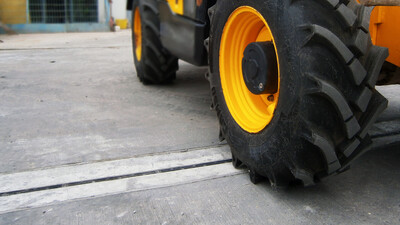Effective drainage is vital for residential and commercial properties, especially in areas prone to heavy rainfall or water runoff. Two popular drainage systems are channel drains and slot drains.
While both are essential to managing surface water, they differ significantly in their construction, installation and overall performance. In this article, we'll compare channel and slot drains to help you decide which option is best for your specific needs.
What is a Channel Drain?
Construction and Design
A channel drain, also known as a trench drain, consists of a U-shaped trough that channels water away from a surface area. The drain is typically covered with a removable grate, which can be made from various materials such as plastic, metal or concrete. The grate prevents debris from entering the drain while allowing water to flow through.
Installation Process
Installing a channel drain involves excavating a trench to fit the drain, placing the drain in position and securing it with concrete. The grate is then fitted on top. Due to the larger size of channel drains, installation can be labour-intensive, requiring precise levelling to ensure effective water flow.
Cost Considerations
Channel drains are generally more expensive than slot drains, mainly due to the cost of materials and the labour-intensive installation process. However, they offer greater versatility in terms of load-bearing capacity and are suitable for areas with higher traffic.
What is a Slot Drain?
Construction and Design
A slot drain is a linear drain with a narrow, discreet opening at the surface. Unlike channel drains, slot drains do not have a removable grate; instead, they feature a slim slot that allows water to enter. The drainage channel below the surface is hidden, making slot drains a more aesthetically pleasing option as in many cases it can be virtually invisible.
Installation Process
Slot drains are easier to install compared to channel drains. They require less excavation, as the drain channel is narrower and shallower. Slot drains can be installed as part of a modular system, which simplifies the process and reduces installation time.
Cost Considerations
Slot drains tend to be more cost-effective than channel drains, both in terms of materials and installation. Their simpler design and installation process makes them a budget-friendly option, particularly for residential applications.
Differences in Operation
Water Flow and Efficiency
Channel drains typically have a larger capacity for water flow due to their wider design and deeper channels. They are ideal for areas with heavy water runoff, such as driveways, parking lots and industrial sites. Slot drains, on the other hand, offer efficient water flow for areas with moderate water runoff. However, their narrow opening can be less effective in handling large volumes of water.
Debris Management
Channel drains are better at preventing debris from entering the drainage system. However, the grates can become clogged over time and require regular cleaning. Slot drains, while more discreet, are more susceptible to blockages due to their narrow opening, making them less ideal for areas with significant debris.
Suitability for Different Applications
Residential Use
For residential properties, slot drains are often preferred for their sleek design and ease of installation. They are well-suited for patios, pool decks and driveways where aesthetics are a priority.
Channel drains are better suited for larger residential areas or properties with heavy water runoff.
Commercial and Industrial Use
In commercial and industrial settings, channel drains are typically the preferred choice due to their higher load-bearing capacity and superior water flow management. They are ideal for locations with heavy vehicular traffic, such as loading bays, car parks and industrial sites.
Slot drains may be used in these settings as well, particularly where visual appeal is important, but they may require more frequent maintenance.
Features and Benefits
Channel Drains
High Capacity
Excellent for managing large volumes of water.
Versatile Load Capacity
Suitable for heavy-duty applications.
Debris Control
Grates help prevent blockages.
Slot Drains
Aesthetic Appeal
Discreet design blends with the surroundings.
Easy Installation
Requires less excavation and time.
Cost-Effective
Generally cheaper in both materials and installation.
Drawbacks and Disadvantages
Channel Drains
Complex Installation
Requires more labour and time.
Higher Cost
Both materials and installation are more expensive.
Visible Grates
These may not be as visually appealing.
Slot Drains
Lower Capacity
Less effective in areas with heavy water runoff.
Maintenance
The narrow opening can lead to blockages.
Limited Load Capacity
Not ideal for heavy traffic areas.
Maintenance and Repair
Channel Drains
Channel drains require regular maintenance to keep the grates clear of debris and to ensure proper water flow. Over time, the grates may need to be replaced due to wear and tear, especially in high-traffic areas. The concrete surrounding the drain may also require occasional repairs.
Maintaining Channel Drains
To ensure your channel drain continues to perform optimally, a maintenance schedule should be followed:
Inspect it Regularly
Channel drains should be inspected regularly, especially after heavy rainfall or periods of high water flow. Look for signs of debris buildup on the grates, cracks in the surrounding concrete, or any blockages within the channel itself.
Clean the Grates
The grates covering channel drains can accumulate leaves, dirt and other debris over time. Regularly remove the grates and clean them with a stiff brush or a hose. For stubborn debris, pressure washing can be effective. Ensuring the grates are clean helps maintain optimal water flow and prevents clogs.
Clear Blockages
If you notice water pooling around the drain or slow drainage, there may be a blockage within the channel. Use a drain snake or a high-pressure water jet to clear any obstructions. In severe cases, you may need to remove sections of the channel to address the blockage directly.
Replace the Grate
Over time, the grates may show signs of wear, such as rust or breakage, especially in high-traffic areas. Replace damaged grates promptly to maintain the system's integrity and prevent injuries or further damage.
Check the Concrete
The concrete surrounding the channel drain should be inspected for cracks or wear. Damaged concrete can compromise the drain's effectiveness and may lead to more significant structural issues. Repair any cracks or deterioration as soon as possible to maintain the drain's performance.
Slot Drains
Slot drains, while easier to maintain due to their lack of grates, can still suffer from blockages. Regular cleaning of the slot is necessary to prevent clogs, and the narrow channel may require more frequent inspections. However, their simpler design often means fewer repairs are needed over the long term.
Maintaining Slot Drains
Slot drains should also be regularly maintained to ensure efficient drainage, with a maintenance schedule as follows:
Regular Inspection
Slot drains require regular inspections, particularly to check for blockages. The narrow slot can easily become clogged with dirt, leaves or other debris, so frequent monitoring is essential, especially during the autumn months or in areas with heavy vegetation.
Clear the Slot
To clear debris from the slot, you can use a narrow brush, a vacuum, or compressed air. Regular cleaning prevents clogs and ensures that water flows freely into the drain. If the slot becomes significantly blocked, a flexible drain rod can help remove the obstruction from deeper within the system.
Flush the System
It’s a good idea to periodically flush a slot drain with water to remove any sediment or small debris that may have accumulated inside the drainage channel. This can be done by running a hose with a moderate water flow through the slot to push debris through to the outlet.
Check the Structure
As slot drains are often installed in concrete or other hard surfaces, you will need to check for cracks or shifts in the surrounding material. Any damage to the surrounding surface can affect the drain's efficiency and may require repair.
Professional Maintenance:
In some cases, particularly in larger commercial installations, professional maintenance may be required for channel and slot drains. Specialists can use high-pressure water jets or specialised equipment to thoroughly clean the drainage system, ensuring it remains in optimal working condition.
Useful Life and Durability
Channel Drains
Channel drains are known for their durability and long useful life, particularly in heavy-duty environments. With proper maintenance, they can last for decades, making them a reliable choice for long-term drainage solutions.
Slot Drains
Slot drains also offer good durability, though their useful life may be shorter in areas with heavy traffic or frequent blockages. Regular maintenance is key to ensuring their longevity.
Which is Better for Your Needs?
Choosing between a channel drain and a slot drain depends largely on your specific requirements. For heavy-duty applications with significant water runoff, channel drains are often the better choice due to their capacity and durability. However, if aesthetics, ease of installation and cost are your primary concerns, slot drains may be the more suitable option.
Ultimately, both drainage systems have their place in managing surface water effectively. By considering factors such as installation, cost, capacity and maintenance, you can make an informed decision that best suits your needs.
We hope you have found this information interesting and helpful. If you have any further questions you are always welcome to call our friendly team of experts on 01420 555600 or email [email protected].
Also, look out for more articles in our ongoing series of blog posts, bringing you useful information, insights, guides and tips on all things drainage!

Written by
Bob Stone
Technical Sales
Heading up our Technical Estimating Department, Bob is our in-house quantity surveyor.

